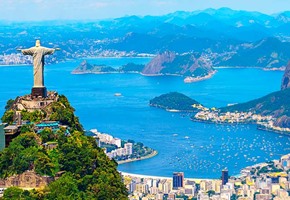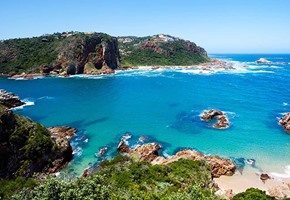
Best Winter Sun Destinations
11/09/2024 · By Sam Preece
Discover the best winter sun destinations with Great Rail Journeys. Escape the cold with our top picks for sunny getaways in stunning locations.
Read moreFormer South African President and anti-apartheid campaigner Nelson Mandela spent eighteen years in the prison at Robben Island on charges of sabotage and conspiracy to overthrow the government. Whilst now inextricably linked with the story of the struggle for democracy in South Africa, a tour of Robben Island - now a museum - gives visitors a fascinating and moving insight into the island's three hundred year history.
Robben Island, situated in Cape Town's Table Bay, was first used as a place of incarceration by Dutch Settlers at the end of the seventeenth century. 'Robben' is the Dutch word for 'seal'; a reference to the many Fur seal colonies that inhabit the bay. Whilst the island has always served the purpose of a prison, especially for political prisoners, it has also at various times been used as a quarantine station, a hospital for leprosy sufferers, an asylum for the insane and, during the Second World War, a coastal defence and training station occupied by the army and the navy.
Robben Island's duty as a prison ended in 1996, and the following year it was declared a National Monument. In 1999 the island was granted UNESCO World Heritage site status. Today Robben Island is both a living museum dedicated to the promotion of equality and human rights, and a poignant testimony to those who fought for democracy.
Find out more with a free brochure and enjoy weekly travel inspiration and offers in our e-newsletter.





 (18 reviews)
(18 reviews)Join us on this sensational tour of Southern Africa, from the glorious Victoria Falls to the multicultural city of Cape Town, with fantastic wildlife viewing in Botswana's Chobe National Park and Nambiti Reserve in Kwa-Zulu Natal. Added to these superb experiences, a rail journey from the city of Pretoria to the coastal metropolis of Durban on...





 (13 reviews)
(13 reviews)Embark on an exceptional voyage of discovery, encountering South Africa's abundant wildlife and epic scenery, aboard Rovos Rail's Pride of Africa, one of the world's greatest luxury trains. This extraordinary journey includes safaris into three of South Africa's top wildlife reserves - the world-acclaimed Kruger National Park, Hluhluwe Park,...


Between 1846 and 1931 Robben Island was used to hospitalise patients with the wasting disease leprosy. The island was chosen both for its isolation since leprosy is contagious, and in the belief that island life would be 'healthy' for the patients.
Limestone for use as a building material and in whitewash was quarried on Robben Island by prisoners using only picks and shovels in the oppressive glare and heat of the South African sun.
Despite the establishment of the first rudimentary 'lighthouse' - a maintained fire lit on the island's highest point - back in 1657, shipwrecks were a fairly common occurrence in Table Bay. Robben Island's permanent lighthouse was built on Minto Hill in 1865 and stands eighteen metres high. A fog horn was added in 1925, and in 1938 the lighthouse was equipped with its own self-contained electricity generator.
Robben Island played a strategic role in the defence of Cape Town in the Second World War and was equipped with gun emplacements for batteries of six-inch and nine-inch artillery.